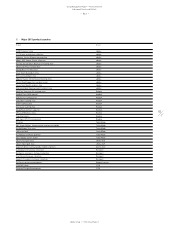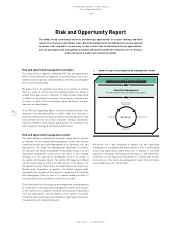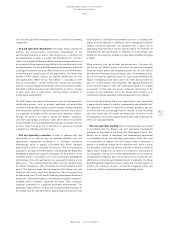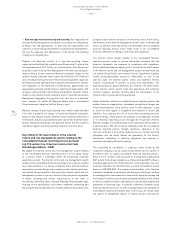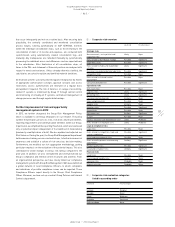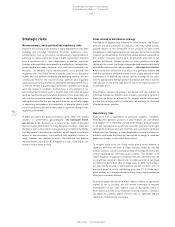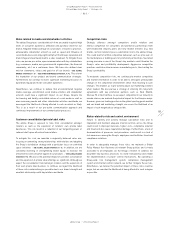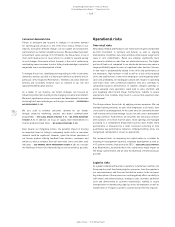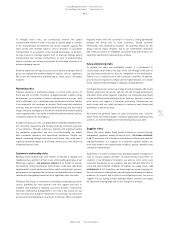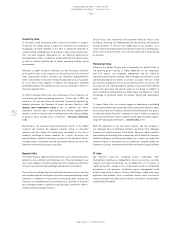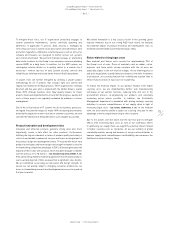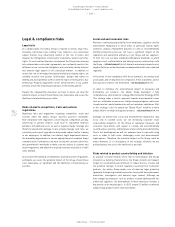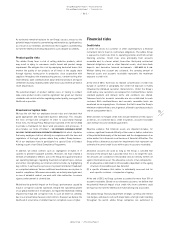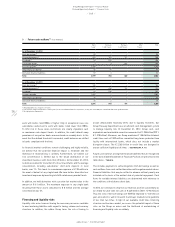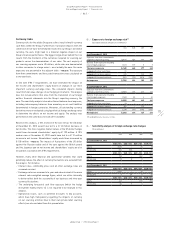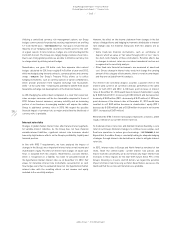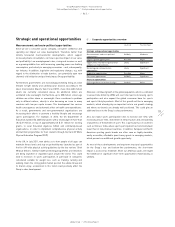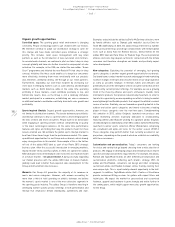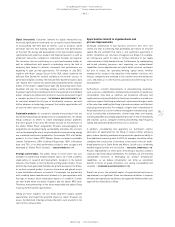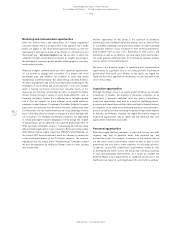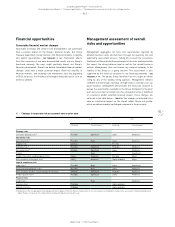Reebok 2012 Annual Report Download - page 195
Download and view the complete annual report
Please find page 195 of the 2012 Reebok annual report below. You can navigate through the pages in the report by either clicking on the pages listed below, or by using the keyword search tool below to find specific information within the annual report.
adidas Group
/
2012 Annual Report
Group Management Report – Financial Review
173
2012
/
03.5
/
Risk and Opportunity Report
/
Operational risks
To mitigate these risks, our IT organisation proactively engages in
system preventive maintenance, service continuity planning and
adherence to applicable IT policies. Data security is managed by
restricting user access based on job description and adhering to data
protection regulations. Additional security measures such as anti-virus
software and firewalls are designed to further protect our systems
and critical information. We perform multiple backups at alternating
data centre locations for the Group’s core enterprise resource planning
system (ERP) on a daily basis. In addition, for the ERP system, our
contingency solution allows us to quickly switch to a remote site if
necessary – without any loss of data. System security, controls and
reliability are reviewed and tested by the Internal Audit department.
IT project risks are further mitigated by utilising a proven project
methodology for all IT projects that includes tight cost control and
regular risk reviews for all major projects. The IT organisation’s strategic
direction and five-year plan is aligned with the adidas Group’s overall
Route 2015 strategic business plan. New quality reviews for major
projects have been implemented to ensure that the progress, quality and
costs of those projects are regularly evaluated by members of senior
management.
Due to the critical nature of IT systems for all our business processes,
we regard the potential impact as major. With increasing data volumes
driven by the expansion of own-retail and e-commerce activities, we now
consider the likelihood of being affected to such a degree as possible.
Product innovation and development risks
Innovative and attractive products generate strong sales and, more
importantly, create a halo effect for other products. Furthermore,
fulfilling the highest standards in terms of product quality and safety is
critical to sustainable commercial success and forms an integral part of
the product design and development phase. The speed with which new
product technologies and fresh designs are brought to market is decisive
for maintaining competitive advantage. In 2012, all brands generated the
majority of their sales with products which had been brought to market
over the previous 12 to 18 months
/
SEE RESEARCH AND DEVELOPMENT, P. 105.
If the adidas Group failed to maintain a pipeline of new innovative products
over a sustained period of time, we would risk a significant sales decline.
We are committed to pursuing our innovation and design strength. To
ensure we can quickly adapt to changing consumer preferences, we
focus on streamlining research and development processes to speed up
the time to market.
We believe innovation is a key success factor in the sporting goods
industry. However, due to our strong R&D track record, we evaluate
the potential impact of product innovation and development risks as
moderate and the likelihood of materialising as likely.
Risks related to rising input costs
Raw material and labour costs account for approximately 70% of
the Group’s cost of sales. Prices of materials such as rubber, cotton,
polyester and those which closely correlate with the oil price are
especially subject to the risk of price changes. As our ordering process
and price negotiations usually take place around six months in advance
of production, our sourcing function has visibility and reaction time to
reflect sharp increases in input costs in its planning.
To reduce the financial impact on our product margins from higher
sourcing costs, we are implementing further lean manufacturing
techniques at our partner factories, reducing time and cost in the
procurement process, re-engineering our products and selectively
increasing prices where possible. In addition, the Profitability
Management department is mandated with driving strategic sourcing
initiatives to ensure competitiveness of our supply chain in light of
increasing input costs
/
SEE GLOBAL OPERATIONS, P. 100. In the medium
term, we also have the ability to adapt our sourcing structure to take
advantage of more competitive pricing in other locations.
Due to the actions we have taken over the last two years to mitigate
effects from increasing input costs, as well as our continuous efforts
in optimising our supply chain, we regard the potential impact related
to higher sourcing costs as moderate. As we see volatility of global
commodity markets easing and because of our pro-active initiatives to
improve supply chain competitiveness and flexibility, we now assess the
likelihood of materialising as likely.


